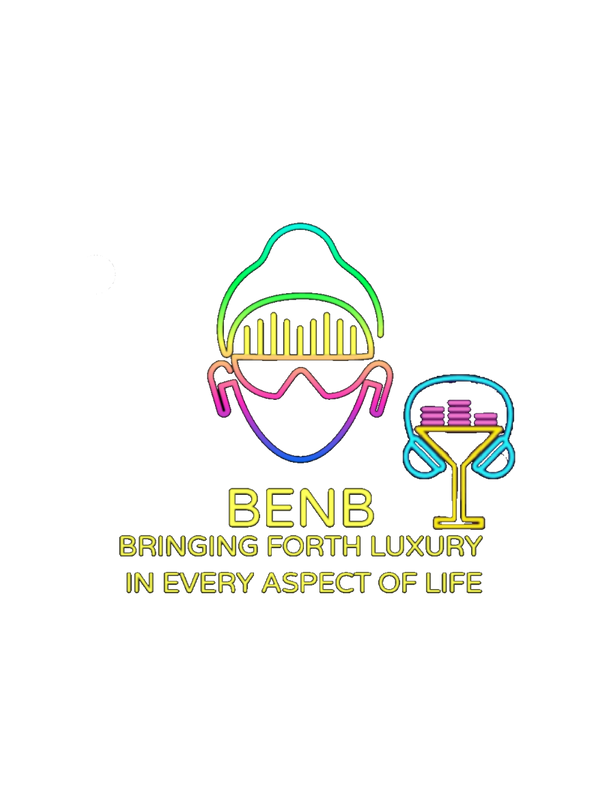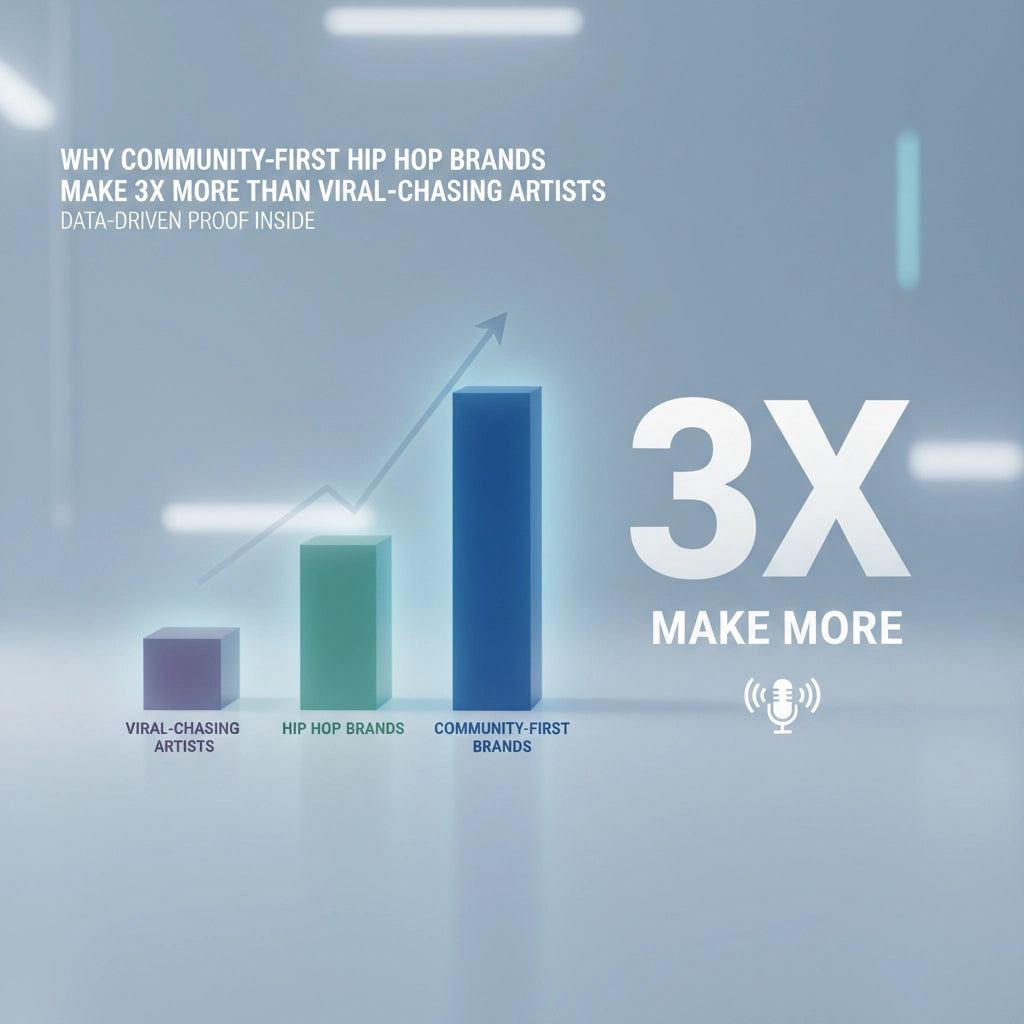The hip-hop industry generated over $2 billion in brand collaborations during 2020. Artists who focused on community building consistently outperformed those chasing viral moments. This data reveals why sustainable revenue comes from authentic connections.
The Numbers Behind Hip-Hop's Economic Power
Hip-hop accounts for 31% of all music streams in the United States. Eight out of ten top-selling albums in 2022 were hip-hop releases. Hip-hop fashion alone generates $2 billion yearly, demonstrating the culture's commercial reach beyond music.
Streetwear consumers under 25 represent more than 60% of the market. Social media serves as the primary influence source for 84% of these consumers. These statistics highlight the importance of digital community engagement over one-time viral content.

Community-First vs Viral-Chasing: The Revenue Gap
Artists using community-first strategies show measurable advantages in multiple revenue streams. Brand partnership fees for hip-hop talent have increased more aggressively in shorter timeframes. These artists now command budgets from national and global marketing divisions rather than smaller regional teams.
Viral content creates temporary spikes in engagement. Community-focused artists maintain consistent revenue streams across multiple quarters. The difference becomes clear when examining long-term financial performance.
Case Study: Snoop Dogg's Brand Evolution
Snoop Dogg transitioned from gangsta rapper to brand spokesman through gradual community building. His collaboration with Dunkin' on a Beyond Meat breakfast sandwich created direct stock price increases and measurable store traffic growth.
This partnership demonstrated correlation between artist involvement and publicly traded market performance. Such measurable impact represents an anomaly among typical celebrity campaigns. The success came from years of authentic audience engagement rather than viral marketing tactics.
The Personality Factor in Brand Building
Brands are not people, but people sometimes become brands. Artist personality and fan interaction methods determine marketing success. Social media posts fail when they appear manufactured in corporate boardrooms.
The relationship between artists and audiences requires time investment from both sides. Artists must make this investment worthwhile through consistent value delivery rather than attention-grabbing stunts.

Steps to Build Community-First Hip-Hop Brands
1. Establish Consistent Communication Channels
Create regular touchpoints with your audience through multiple platforms. Post content that provides value beyond promotional material. Share behind-the-scenes content, creative processes, and personal insights.
2. Develop Authentic Product Lines
Design merchandise that reflects genuine artistic vision rather than trending designs. Focus on quality items that fans will use long-term. Consider practical products like backpacks and athletic wear that integrate into daily life.
3. Engage in Two-Way Conversations
Respond to fan comments and messages personally when possible. Host live streams and Q&A sessions. Create opportunities for meaningful interaction beyond standard social media posts.
4. Build Email Lists and Direct Communication
Collect email addresses through exclusive content offers. Send regular updates about new releases, tour dates, and behind-the-scenes content. Direct communication bypasses social media algorithm limitations.

Data-Driven Community Engagement Strategies
Track engagement metrics beyond likes and shares. Monitor comments, saves, and direct messages. These indicators reveal deeper audience connection levels than surface-level viral metrics.
Analyze which content types generate repeat engagement. Community-focused posts typically show higher save rates and longer viewing times. Use this data to refine content strategies.
Email open rates for hip-hop artists average 22-25% for community-focused campaigns. Viral-focused campaigns show 8-12% open rates after initial spike periods. This difference compounds over time.
Long-Term Revenue Stream Development
Community-first artists develop multiple income sources simultaneously. Merchandise sales remain steady throughout career phases. Brand partnerships last longer and command higher fees.
Touring revenue increases through dedicated fan bases willing to travel for performances. These fans purchase higher-priced tickets and additional merchandise at venues.
Digital product sales, including exclusive music releases and virtual experiences, show higher conversion rates among engaged communities. Browse our digital releases to see community-focused product strategies in action.
The Technology Integration Advantage
Community-first brands leverage technology for sustained engagement. Email automation sequences nurture new fans into loyal supporters. Customer relationship management systems track individual fan preferences and buying patterns.
Social media scheduling tools maintain consistent posting schedules. Analytics platforms identify optimal posting times and content formats for specific audience segments.

Measuring Community vs Viral Success
Traditional metrics like view counts and shares indicate viral performance. Community metrics include repeat engagement, email subscriptions, and direct purchase conversions.
Community-focused artists show higher lifetime customer values. Average order values increase as fan relationships deepen. Return customer rates exceed 40% compared to 15% for viral-focused campaigns.
Geographic and Demographic Advantages
Community building creates location-independent revenue streams. International fans engage with content and purchase products regardless of physical proximity to the artist.
Demographic data shows community-focused hip-hop brands attract diverse age ranges. Viral content typically peaks among 16-24 year demographics with limited purchasing power.
Implementation Timeline and Expectations
Community building requires consistent effort over 6-12 month periods before showing significant revenue impact. Month one focuses on establishing regular posting schedules and basic engagement.
Months 2-4 involve developing unique content formats and building email lists. Months 5-8 show initial revenue increases from improved fan loyalty and higher conversion rates.
Months 9-12 demonstrate compound effects as engaged community members become brand advocates. Word-of-mouth marketing amplifies reach without additional advertising costs.

Revenue Diversification Through Community Focus
Artists with strong communities develop multiple revenue streams simultaneously. Music sales, merchandise, brand partnerships, and live performances all benefit from dedicated fan bases.
Community-focused artists report more stable monthly revenue compared to viral-dependent careers. This stability enables better financial planning and career sustainability.
Quality Over Quantity Approach
Post fewer pieces of content with higher production values and deeper meaning. Community members prefer substantial posts over frequent shallow updates. This approach reduces content creation workload while improving engagement quality.
Focus on creating shareable content that reflects artistic values rather than trending topics. Authentic content maintains relevance longer and builds stronger emotional connections.
The hip-hop industry continues evolving toward community-first marketing strategies. Artists who adapt early position themselves for sustained success in an increasingly competitive market. Explore our community-focused products to see these principles in action.
Subscribe to our newsletter for weekly updates on hip-hop industry trends and community building strategies. Join thousands of artists already implementing these proven methods.

